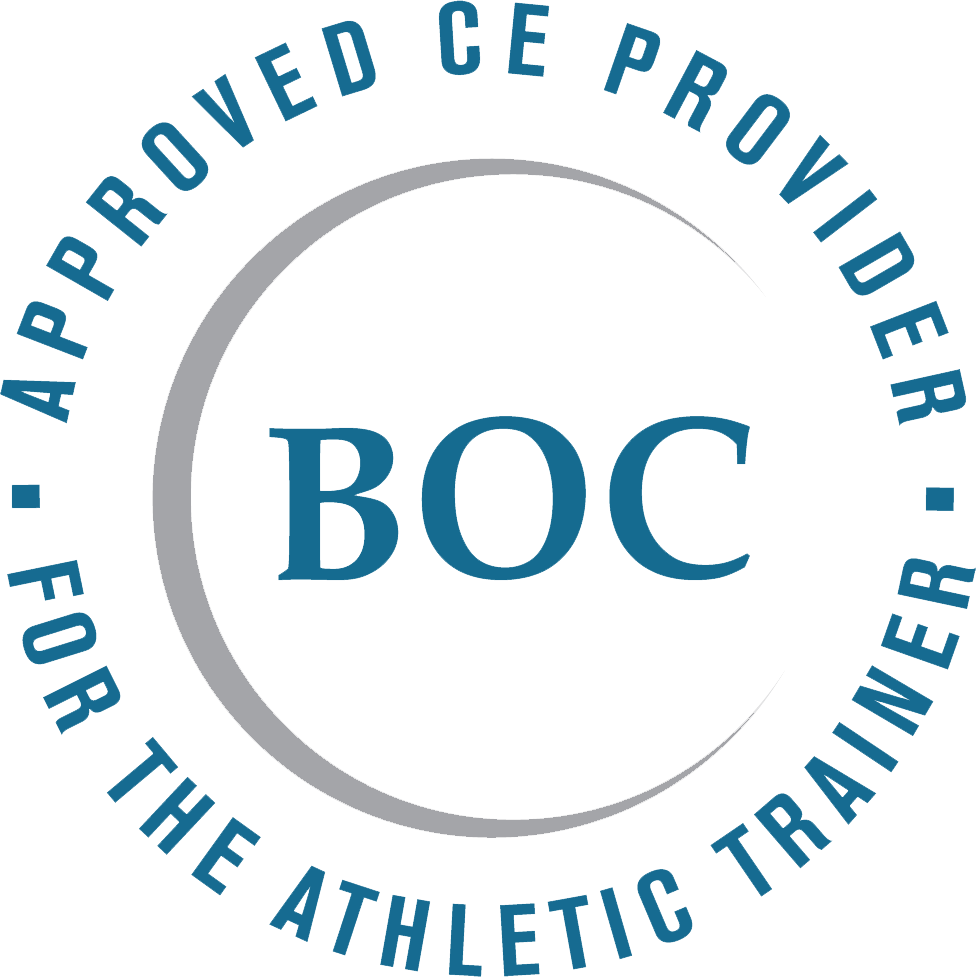
Do you wonder about the credentials of the person rehabbing your young athlete’s strained hamstring? Or, maybe you’re curious about what regulatory oversight there is for the medical professional on the sports field with your high school athlete? What are the athletic training education requirements for 2021, and how does one become an athletic trainer, anyway?
ATHLETIC TRAINING EDUCATION BASICS
Education for athletic trainers strives to create highly skilled and knowledgeable allied healthcare professionals. To achieve this, athletic training education requires at least a bachelor’s degree from a nationally accredited program. This accreditation ensures that all athletic trainers meet the same minimum competencies required for their job. As an example, athletic trainers receive training in injury evaluation and diagnosis, acute emergency care, therapeutic injury rehabilitation, and injury prevention, among many other topics. Most athletic trainers have exceeded the minimum education requirements. In fact, nearly 70% of all athletic trainers have their master’s degree, as well.
The Commission on Accreditation of Athletic Training Education (CAATE) oversees the core skills required for athletic training proficiency. Furthermore, CAATE performs regular audits of accredited programs. This guarantees program compliance. Along with learning the required skills, athletic training students must pass a national exam through the Board of Certification (BOC).
ATHLETIC TRAINING EDUCATION FOR 2021
As of 2015, the National Athletic Trainers Association, CAATE, and the BOC, jointly agreed that a master’s degree is the new minimum level of education for entry-level athletic trainers. By 2022, all CAATE accredited programs must transition from an entry-level bachelor’s degree program to an entry-level master’s degree program. Of course, an exception is in place for the 30% of athletic trainers currently practicing without a master’s level education. In fact, they will be allowed to continue practicing provided they stay current with their certification.
CONTINUING EDUCATION
 In addition to the national exam, the BOC also ensures that athletic trainers complete at least 50 credit hours of continuing education every two years. This requirement guarantees that athletic trainers remain current in their ability to recognize, treat, and prevent injuries.
In addition to the national exam, the BOC also ensures that athletic trainers complete at least 50 credit hours of continuing education every two years. This requirement guarantees that athletic trainers remain current in their ability to recognize, treat, and prevent injuries.
STATE OF OREGON OVERSIGHT
Individual states also have requirements of athletic trainers. For example, the Oregon Health Authority (OHA) licenses all athletic trainers in the state of Oregon. Licensure ensures that anyone in the state of Oregon performing the duties of an athletic trainer has passed all the required education and certification standards. In fact, they must sign an affidavit verifying that they have kept up with continuing education requirements. The OHA may audit athletic trainers and request that they provide records of compliance with BOC requirements.
As you can see, athletic trainers are subject to many layers of education and oversight. Specifically, they must complete a rigorous course load, pass a national exam, obtain state licensure, provide proof of compliance with agency requirements, and complete 50 credit hours of continuing education every two years. As a result, you get a professional, specialized, and competent allied healthcare professional caring for your young athlete when you need them most.
Please visit www.nata.org if you would like to learn more about athletic trainer educational requirements, CAATE, and the BOC.
Original article written by Michael Estes, MS, ATC, athletic trainer for The Center Foundation and Crook County High School in Prineville, OR, and updated for 2021 by Stuart Schmidt, MS, ATC, CSCS, athletic trainer supervisor. Learn more about Michael and Stuart HERE.
